Dyson V10 vs V11 cordless vacuum: which is better?
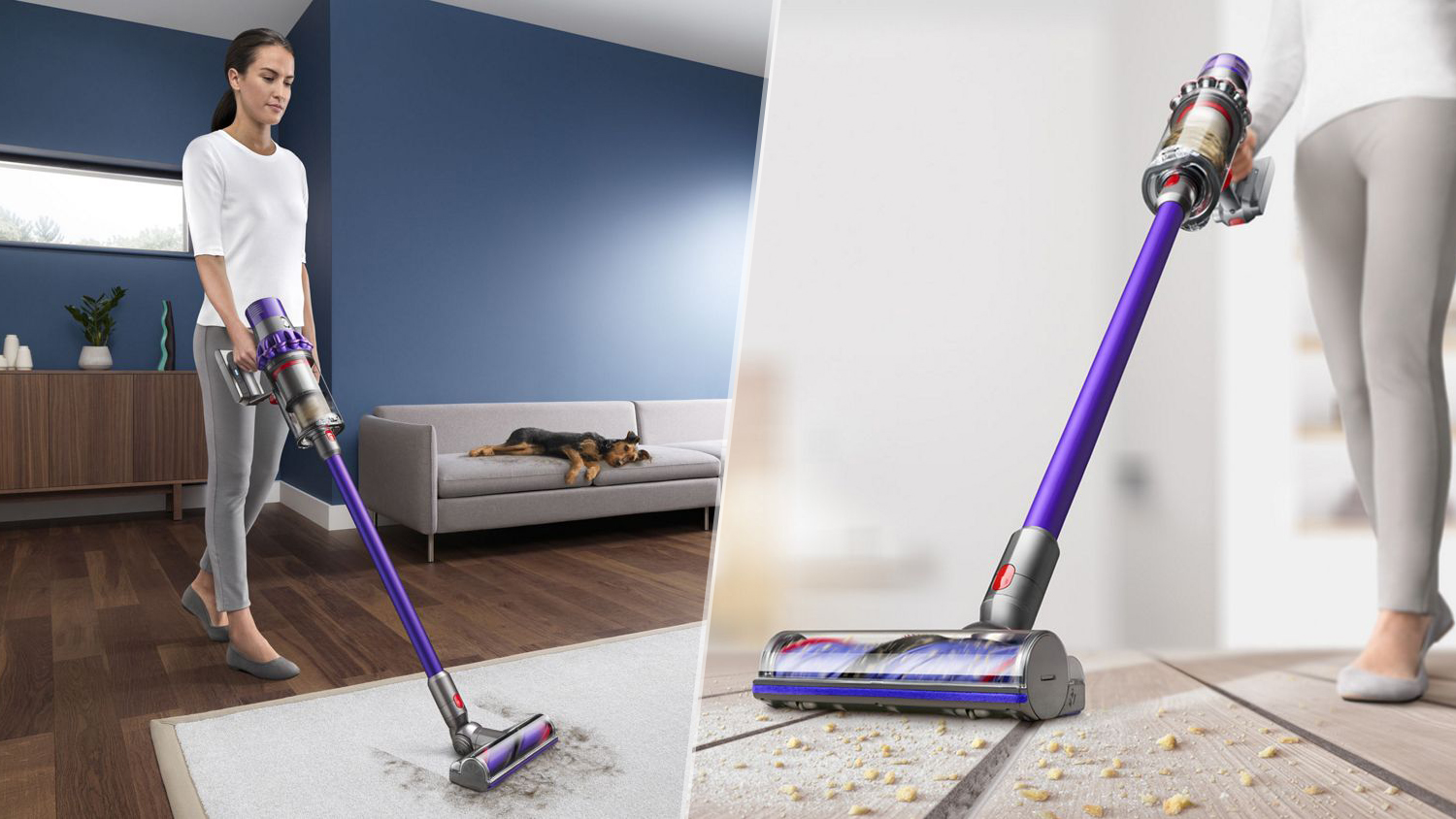
If you're torn between the Dyson V11 and V10 and trying to figure out what the differences are and which is the best cordless vacuum for you, this article is here to help.
The V10, or Cyclone V10 to give it its proper name, is the older of the two models. It launched in 2018 and was the vacuum that made Dyson wave goodbye to corded vacs altogether. You can read about it in depth in our Dyson Cyclone V10 review.
The V11 was launched in 2019, and sports the same in-line design but boasts a range of improvements, including redesigned mechanics, a helpful LCD screen, and the ability to detect if you're on a hard floor or carpet and adjust suction accordingly. You can read all about that one in our Dyson V11 review.
In the flagship range, the V11's successor was the Dyson V15 Detect (see how the two compare in our Dyson V11 vs V15 face-off). The brand also launched a V12 Detect Slim at the same time as the V15, but that's not a flagship model (our Dyson V11 vs V12 comparison sheds some light on the differences).
Overall, in our V11 vs V10 battle, the V11 is the best Dyson vacuum, in terms of design and performance. However, the fact that it's a little older might mean you're able to score a particularly good deal (although at time of writing, pricing was very similar, and availability on the V10 is patchy). Read on for our full Dyson V10 vs V11 showdown...
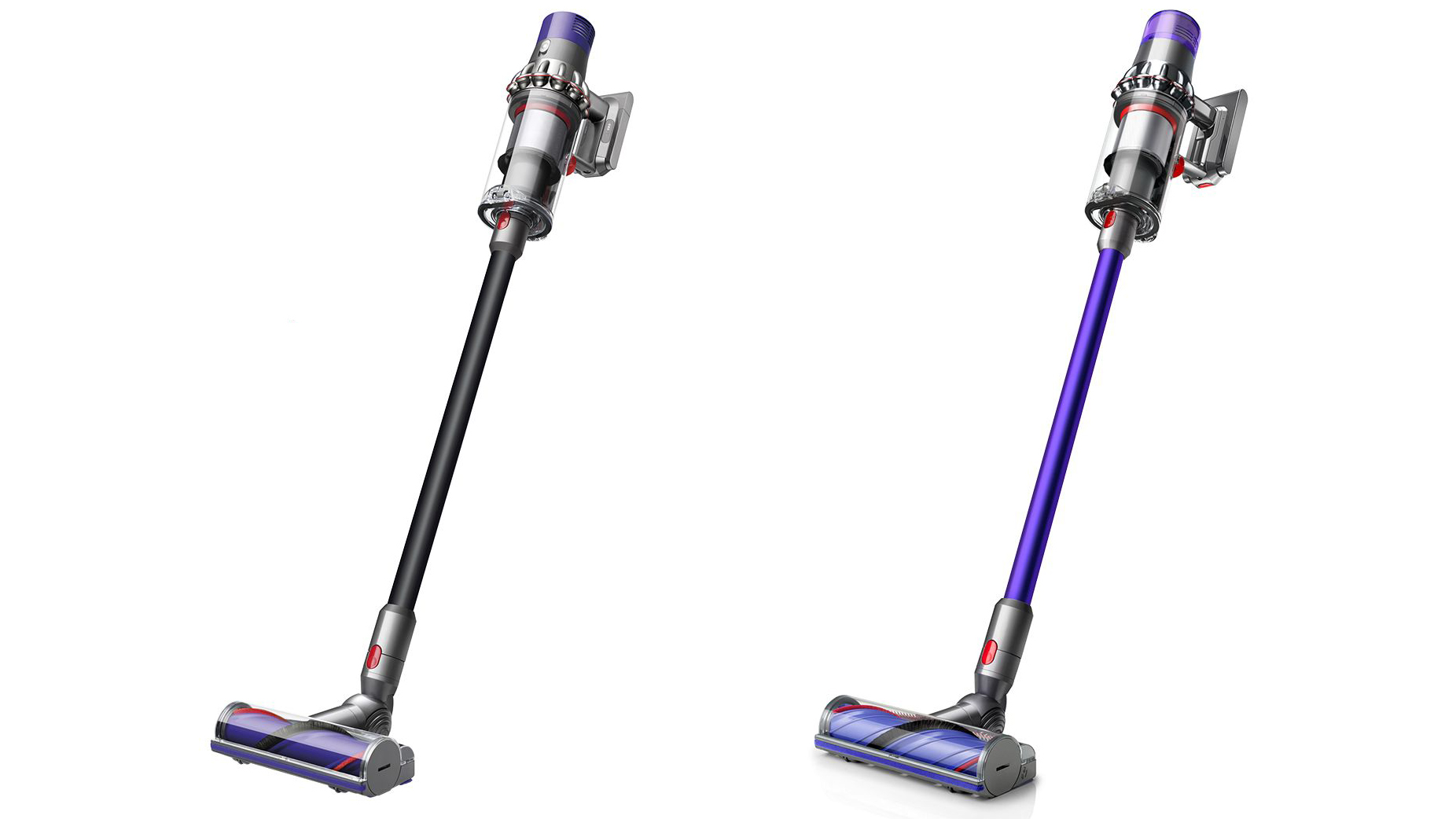
Dyson V10 vs V11: price & value for money
We'll start by saying that comparing prices on Dyson vacuums is complicated by the fact that there are a few different versions with the same base model but different tools. At time of writing, the V10 is only available to buy direct from Dyson in Australia – it's listed in the US and UK, but out of stock. It may well be available to buy from other third party retailers, although it does look like it might be being phased out at this point.
US
In the US there's a standard Dyson V11 with a ticket price of $569.99 (discounted to $469.99) and a V11 Extra, which has a list price of $599.99 and comes with a load of extra tools.
Sign up for breaking news, reviews, opinion, top tech deals, and more.
On the Dyson US website there is a Dyson Cyclone V10 Motorhead listed, with a ticket price of US$500, but it's out of stock at time of writing.
UK
In the UK there's only the V11 Advanced, for a list price of £429.99 (discounted to £359.99). Alternatively, there's a Cyclone V10 Total Clean for £449.99, but again that's out of stock.
Australia
In Australia, it's the standard V11 for AU$1,199. The older model is available as a regular Cyclone V10 (AU$1,099 down to AU$694), or the Cyclone V10 Absolute (list price AU$1,299, reduced to AU$744).
At those prices, both models are roughly in the upper-mid or lower-premium price bracket. The better value one will depend on which iteration you find, and what deals are available where you live – although based on the fact they're roughly the same price, we're inclined to say the V11 might be better value for money, in general.
Because these are both slightly older models, it is worth keeping an eye out for Dyson deals – around major shopping events like the Black Friday sales in particular.
- Winner: Draw – it's very tricky to compare, given the variety of models and fluctuating availability
Dyson V10 vs V11: design
Looks-wise, the V11 is very similar to the V10, with an 'in-line configuration' that lines up the motor, bin and cyclones to maximize suction power. The bin size is the same, at 0.2 gallons / 0.75 liters, and with both, you attach tools directly to the motor unit for use as a handheld. Due to battery upgrades (more on those later), the V11 is marginally heavier than the V10 – 6.6lbs / 3kg vs 5.7lbs / 2.6kg.
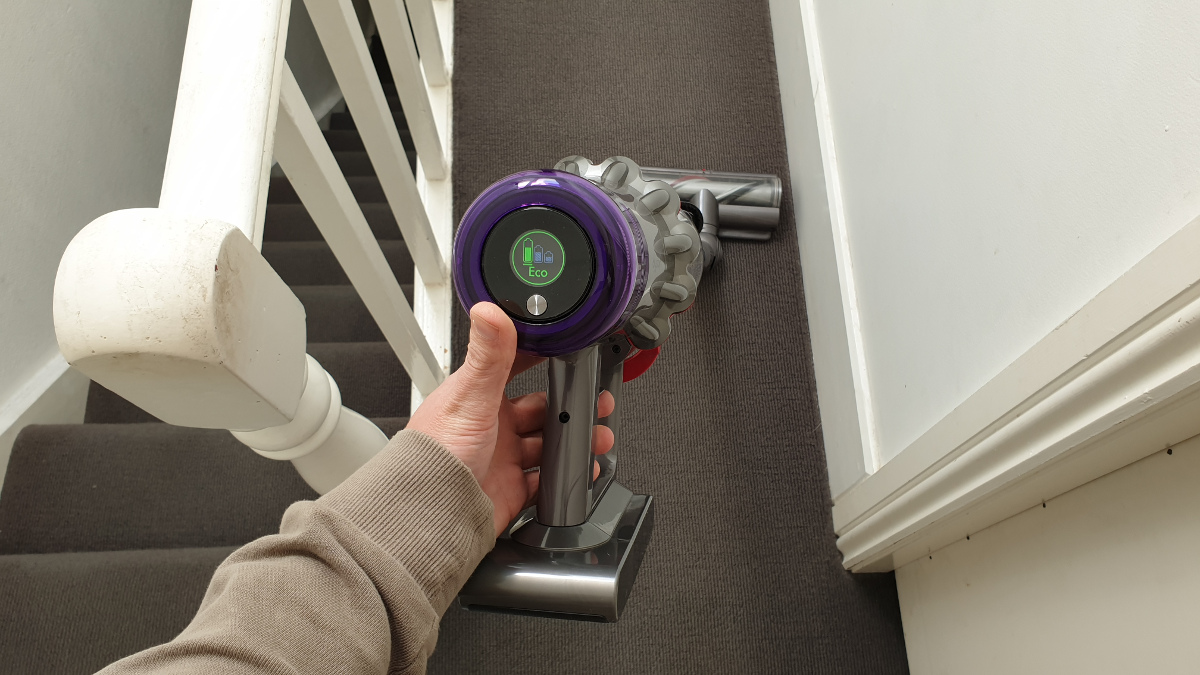
One big difference between the V11 and the V10 is the addition of an LCD screen on the V11. This tells you how much cleaning time you have left before the battery runs out, adjusting for the current mode and whether there's a powered cleaning head attached or not. It also provides any relevant alerts, including any blockages (including suggestions of how to resolve them) and letting you know if the filter needs cleaning.
On the V10, there's no screen. You'll have to rely on indicator LEDs to tell you if there's any issue, and naturally these can't provide quite the same level of information as a screen can.
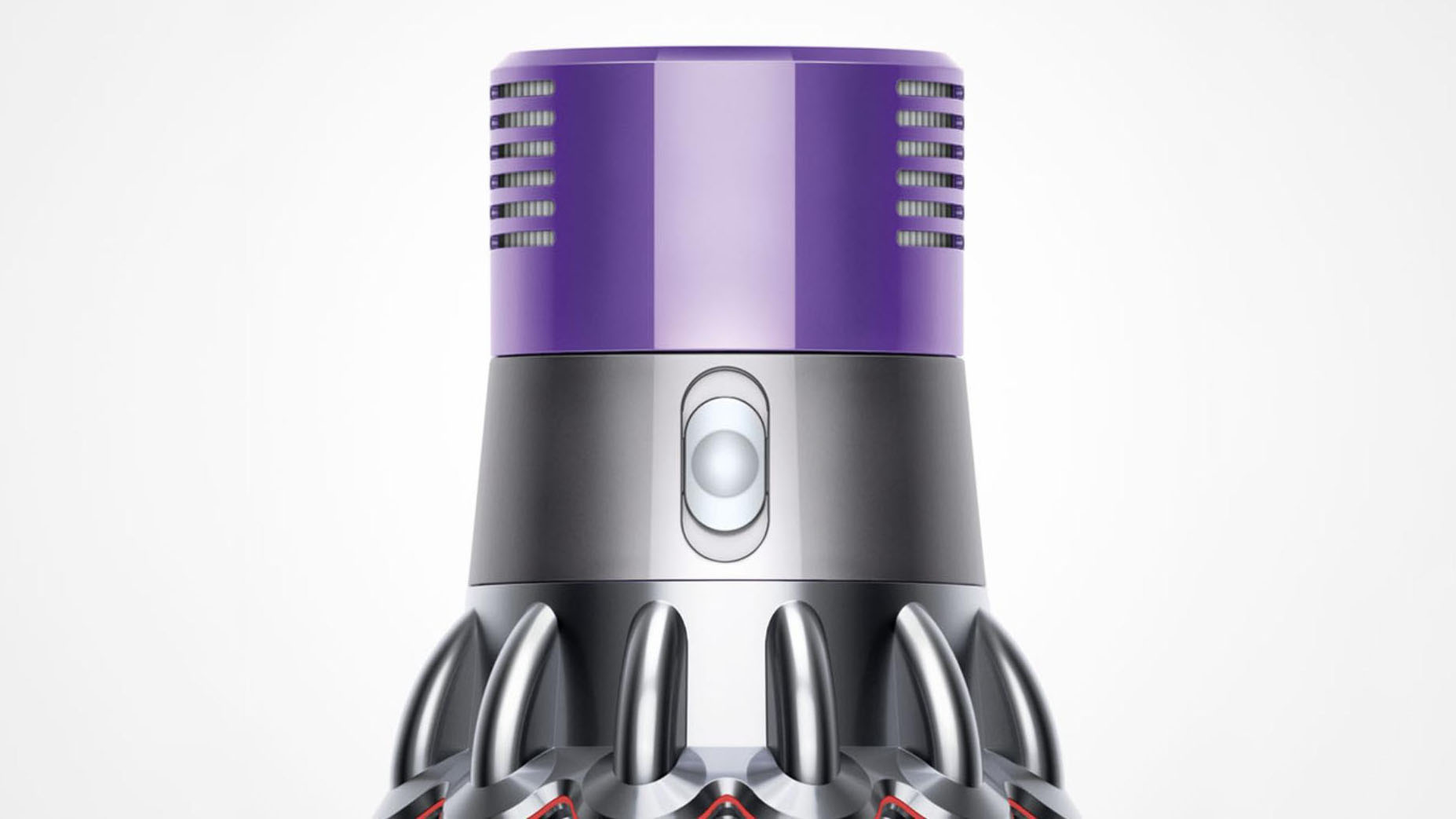
Inside, the Dyson V11 has some mechanical improvements to boost performance, including redesigning the airflow diffusers and impeller blades to reduce turbulence, boost suction (by 20 per cent over the Cyclone V10), increase airflow efficiency, and reduce noise.
There's an extra 45AW (air Watts) of power on the V11's Boost setting (now 185AW) compared with the Cyclone V10. The air filtration system is also better on the V11, with improvements geared towards keeping particles inside the vacuum rather than letting them escape into the air.
We won't focus too much on the tools here, because which ones are included will depend on where you live and which configuration of the vacuum you opt for... and the full range is pretty easy to purchase separately from Dyson if you so wish. However, one of the key attachments – the High Torque head – was been redesigned for the V11 to make it more efficient and simpler to use.
What is worth noting on the tools front is that the V11 has a clip that enables you to attach accessories to the vacuum itself, which is useful.
- Winner: Dyson V11 – Small but useful updates like the helpful LCD screen, tool clip and improved empty mechanism make this an easy win for the V11
Dyson V10 vs V11: performance
Both vacuums have three modes. On the V10, it's a low/medium/high situation, while the V11 has an Eco, Auto, and Boost. The maximum cleaning time is the same for both: a full hour. Dyson says you're getting more suction in the V11's Eco mode than the V10's low mode, but both of our reviewers noted specifically that there was plenty of power in this lowest mode.
The V10's highest mode lasted around 5 minutes in our tests, while the V11's Boost lasted 12 min (and should pack a fair bit more power). Either way, this mode is for the most stubborn dirt only.
However, the middle option is probably the one you'll be using most. With the V10, our reviewer got around half an hour of cleaning time in this model. The V11's Auto mode lasted between 20 and 45 minutes. Why such a wide range? Because in Auto mode, this vacuum detects whether it's on hard floor or carpet, and adjusts suction accordingly. The V10 does not do that – you'd need to adjust the mode manually.
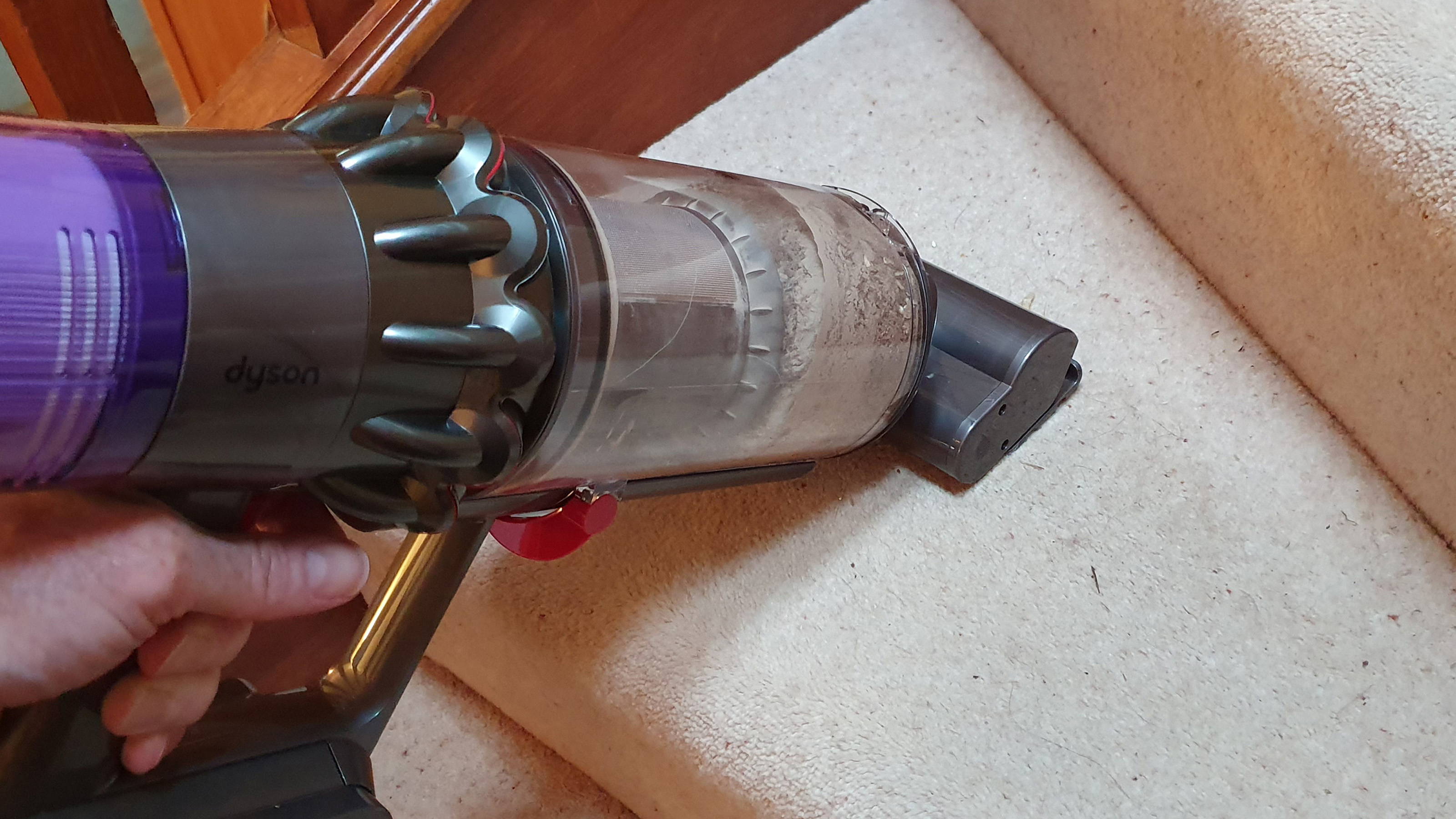
That extra battery power means a longer recharge time, though, and you'll need to factor in an extra hour on top of the three hours 30 it takes to charge the V10 to get the V11 fully juiced up.
Both testers were impressed with the range of tools, although these are largely the same from model to model so we won't focus on them too much here. Occasional blockages were a small issue with both vacuums, but the V11 has the benefit of being able to tell you, via its screen, where the issue is and how to clear it.
In terms of how satisfied our testers were with the cleaning power during the review process, neither had any issues. Both were impressed with how much suction each vacuum offered, even on the lowest setting, and found it picked up any debris put in front of it. So while the V11 might have more power, based on the specs and information provided by Dyson, either model seems to be more than up to acing most household cleaning tasks.
- Winner: Dyson V11 – more suction power and a useful Auto mode gives the newer vacuum the edge here.
Dyson V10 vs V11 specs
| Header Cell - Column 0 | Dyson V11 | Dyson V10 |
|---|---|---|
| Weight: | 6.61lbs / 3kg | 5.73lbs / 2.6kg |
| Dimensions (L x W x H): | 10.51 x 9.84 x 49.65" / 26.7 x 25 x 126.1cm | 9.5 x 9.8 x 48.7" / 24.2 x 25 x 123.8cm |
| Bin volume: | 0.2 gallon / 0.77L | 0.2 gallon / 0.77L |
| Max runtime: | 60 mins | 60 mins |
| Battery life: | 60 mins in Eco without powered head, 20-45 mins in Auto, 12 mins in Boost | 60 mins in Low, around 30 mins on Medium, around 5 mins on high |
| Charge time: | 4hrs 30 | 3hrs 30 |
| Tools included: | Varies by region and model. US standard version: Motorbar Cleaner Head, Hair Screw Tool, Crevice Tool and Combination Tool | Varies by region and model. |
| LED headlights: | No | No |
Should you buy the Dyson V10 or V11?
Buy the V11 if...
You have a mix of hard floor and carpet
The V11's Auto mode detects where there is hard floor and where there's carpet, and raises or lowers the suction accordingly. This helps use battery efficiently and means you don't have to mess around swapping modes.
You want an easy-to-use vacuum
Sure, no vacuum cleaner is especially tricky to use, but the addition of a useful LCD screen that provides battery life info and tells you how to clear blockages means the V11 is an absolute breeze.
Buy the V10 if...
You're on a budget
Prices aren't as different as they should be between these two models, but the V10 does seem to generally be the cheaper of the two. Plus, it's older, so more likely to attract a discount.
You want a speedy recharge time
One of the only areas where the V10 won out was on how long it took to juice up the battery – the V11 needs an extra hour on top of what the V10 needs. So if you don't really need the extra suction but do want a quicker charge, that could be the better choice.

Ruth is TechRadar's Homes Editor specializing in air (vacuum cleaners, fans, air purifiers), and hair (hair dryers, straighteners and stylers). She has been in consumer journalism since 2020, reviewing and writing about everything from outdoor kit to mattresses and wellness gadgets, with stints on Tom's Guide and T3.